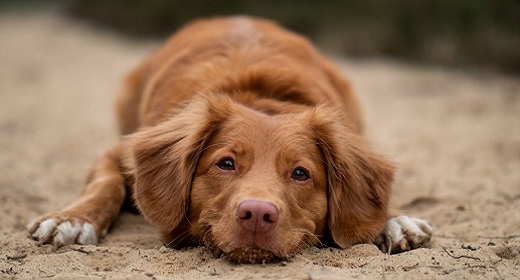by Riley Black: Two recent papers explore how and why humans started hanging out with wolves…
Jet is many things. He’s my canine companion, raider of the trash, mail watchdog, irrepressible sniffer of faces, and a second alarm clock. Each morning when he hears Survivor’s “Eye of the Tiger” play as my phone alarm, he wags his tail with a thump against the wall, and then (with permission) jumps up on the bed. It was during one such moment, pinned in place by about 75 pounds of German shepherd and thinking about just how many wiry black hairs were being freshly embedded into the duvet, that I wondered, Why do we even have dogs? They are lovable, but they are also loud, smelly carnivores.
As you may well know, dogs were domesticated from gray wolves, or an ancestor thereof (the process is hardly a straight line from wild thing to household pet). We literally pay homage to those origins when we buy kibble covered in all sorts of wild iconography or chatter about who’s the alpha in any given group of lovable pups. Dogs were also potentially domesticated more than once—evidence suggests our household companions came from a relatively recent instance in western Eurasia. But I was intrigued to read a new Proceedings of the National Academy of Sciences paper which locates the origin of some of the very first dogs in the last Ice Age, about 23,000 years ago.
This is the scene, according to that paper, for our early interactions with dog ancestors: The world’s glaciers were as large as they’ve ever been during the Ice Age. Much of the habitable space around those ice sheets was chilly grassland where mammoths and lions roamed. In Siberia, that meant that wolves and ancient people were hemmed in together. The overwhelming ice created comparatively small oases of frozen tundra where both humans and wolves licked their chops looking at the herbivorous prey that grazed on the chilly steppe. Circumstance had brought the two social species together.
It’s fun imaging Jet as the distant relative of an Ice Age pup. But who on the tundra looked at wolves with all those teeth and said, “Ooo, I want one?” I know I probably would. I am fond of menacing creatures, perhaps in part with the already-well-established relationship I have with dogs. But I asked Angela Perri, a Durham University archaeologist and an author on the PNAS paper, how our ancestors were possibly endeared to those of our pups. The leading idea being trotted around archaeological circles is centered on food. “I think the trash pile theory is the most-likely and most-subscribed-to hypothesis at the moment,” she explains. Where there are humans, in other words, there is trash that dogs find yummy. Maybe humans and wolves got used to each other as they all picked what they could from mammoth carcasses. Or perhaps wolves got used to human proximity when they snacked on our garbage piles.
Researchers have gone so far as to narrow down what some of those initial morsels might have been. In a paper published in January of this year, Finnish Museum of Natural History researcher Maria Lahtinen and colleagues note that the kind of meat we left behind mattered. Humans, unlike wolves, have a hard time metabolizing lean meat. During winters, wild game would have been leaner. Perhaps, the researchers propose, humans ate what fatty cuts they could and gave curious wolves the rest, opening the door to domestication. I like imagining that Jet’s expectant look when I cook any form of animal protein for dinner is similar to the stare friendlier wolves would have given to Pleistocene people. The fact that domesticated dogs are better than wolves at drawing nutrition from leftover spaghetti is a testament to our long-standing arrangement for tongue-washed dishes.
How did we get from wolves hanging around for scraps to my German shepherd jumping on my bed and rolling around like he just found something wonderfully stinky? No one kept a diary written on reindeer skin saying, “Mom says I can keep Spot” to document what really happened. “Paleolithic hunter-gathers would have no concept of domestication, having never seen a domesticated plant or animal,” Perri says. It’s unlikely that anyone was looking at a gray wolf tearing a chunk from a bison haunch and saying, “That’d make a great dog.” It’s possible that wolves got friendlier and friendlier as they hung around looking for scraps, explains Brian Hare, the director of the Duke Cognition Center, in a piece for National Geographic. After all, only wolves who didn’t have the desire to snarl at and disturb humans would have been allowed to keep hanging around, and live to produce more, increasingly doglike wolves, who might be even willing to take cues from people. “Wolves lead and dogs follow,” as a 2019 Scientific Reports paper explains the shift. From there, we might have gotten closer to dogs for their utilitarian uses, like assisting with hunting or hauling.
I can’t say that Jet is great as a beast of burden. The few times I’ve put a pack on him to help carry hiking supplies, he’s knitted his brows into a “but why?” expression. But he is helpful to have around when my depression or post-traumatic stress disorder creep up on me. He’s my emotional support animal, getting me to go walk when I just want to shelter under the covers. He lays his big doggy head on my leg when the tears roll down. And that might be a whisper of how dogs not only came into our lives, but became part of our homes. Another study out this year found that womens’ fondness for dogs, in particular, helped dogs gain personhood and distinction from other animals. Maybe it was something about those puppy-dog eyes, after all. I’m far removed from Pleistocene Siberia, but I thought I wasn’t a dog person until I was introduced to a snuffling puppy who needed some food and a warm place to sleep. I’m glad dogs not only turned over the Ice Age trash, but learned to stay.




















































